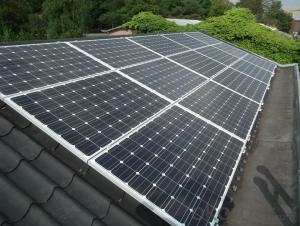Solar Panels 101: Understanding the Basics
Hey there! Are you curious about solar panels but feel a bit overwhelmed by the technical jargon? Don’t worry, we’ve got you covered. This guide is like a friendly chat with a knowledgeable buddy, diving into the world of solar energy in a way that’s easy to understand and, dare I say, even fun! So, grab a cup of your favorite beverage, sit back, and let’s explore solar panels together.
What Are Solar Panels?
Solar panels, also known as photovoltaic (PV) panels, are like tiny energy factories. They convert sunlight into electricity, which can power your home, your gadgets, and even your electric car. It’s like having a personal power plant on your rooftop!
How Do They Work?
Ever wondered how solar panels harness the sun’s energy? It’s all about the photovoltaic cells within the panels. These cells are made from semi-conductive materials, usually silicon, which have a unique property: they absorb photons (light particles) from the sun and convert them into electricity. It’s like magic, but with science!
The Sun’s Role in the Process
The sun is a massive ball of energy, and it’s been around for billions of years. It’s our planet’s primary source of light and heat, and now, thanks to solar panels, it’s also a source of electricity. The more sunlight that hits the panels, the more electricity they produce. So, if you live in a sunny area, you’re in luck!
Types of Solar Panels
There are a few types of solar panels out there, and each has its own set of pros and cons. Let’s take a quick tour:
– Monocrystalline Solar Panels: These are the most efficient type, with a sleek, black appearance. They’re made from a single crystal structure, which allows for better electricity flow.
– Polycrystalline Solar Panels: These are a bit less efficient but often more affordable. They’re made from multiple silicon crystals melted together, giving them a blue hue.
– Thin-Film Solar Panels: These are the most affordable but least efficient. They use a thin layer of photovoltaic material and are often used for large-scale projects or in areas with less sunlight.
Installing Solar Panels
Now that you know what solar panels are and how they work, you might be wondering about the installation process. It’s not as daunting as it seems. Here’s a quick rundown:
1. Assess Your Roof: First, you need to make sure your roof can handle the weight and has the right orientation for maximum sun exposure.
2. Choose the Right System: Depending on your energy needs and budget, you’ll choose the type and size of the solar panel system.
3. Hire a Professional: It’s best to leave the installation to the experts to ensure everything is up to code and functioning optimally.
4. Permits and Incentives: Check for any permits required in your area and look into incentives or rebates that can help offset the cost of the system.
5. Maintenance: Once installed, solar panels require minimal maintenance. A quick cleaning a couple of times a year is usually all that’s needed.
The Cost of Solar Panels
We know what you’re thinking:

